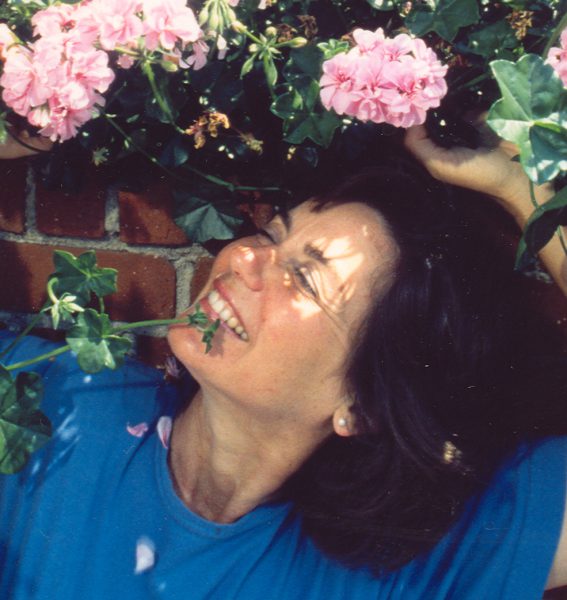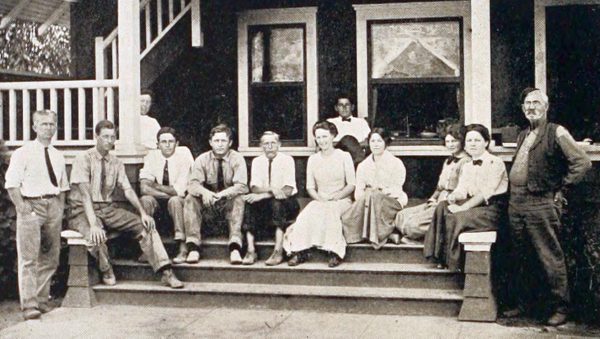 By Annlia Hill
By Annlia Hill
The ocean was a way of life for the Alley Kids. This included taking summer classes at the Laguna Marine Laboratory of Pomona College.
According to the Laboratory’s First Annual Report (1912), Pomona College students in biology had for many years made annual visits with Dr. Albert Cook, head of the Department of Biology, to the coast, usually to Deadman’s Island at San Pedro. The single day each year spent among the tide pools teeming with life grew into a summer-long program. In Spring 1911, Professor C. F. Baker and Charles Metz walked the coast from Redondo to Laguna to select a spot for the program. “The latter locality was settled upon without any question, as by all odds the most desirable for our immediate purposes ‒ studies on the fauna and flora of the tidal zone and its immediate neighborhood. The varied topographical and ecological conditions ‒ the high promontories, the acres of rocky tide pools exposed at low tide, the numerous small sand beaches, all equally accessible ‒ together with the varied beauty of all the natural surroundings, showed this to be a most uniquely favorable place.” They rented a large house from Mr. James T. Smith and commenced the program that summer.

Who was James T. Smith? Was he “Cussin’ Jim,” “Salvation Smith,” “Holy Jim,” foul-mouthed beekeeper and resident of the Santa Ana Hills? According to Jim Sleeper, local historian and one-time resident of Holy Jim Canyon, the first dwellings in that canyon were erected by a beekeeper in the 1880s and passed on a few years later to another beeman, James T. Smith. Like many of the canyon’s first residents, Smith fought for the Union in the Civil War (73rd Indiana Volunteers). With a walrus mustache, a hat with an upturned brim and a plug of tobacco in his pocket, Jim lived with his wife Hat (Harriet) in the canyon. Smith, whose vocabulary would “peel paint off a stove pipe,” picked up a colorful collection of nicknames, including “Greasy Jim” and “Lying Jim.” His friends called him “Salvation Smith” to get his goat. Apparently, when map makers first attached a name to the fork of Trabuco Creek that Smith called home, they modified his nickname to “Holy Jim.”
James Smith suggested a permanent marine laboratory in Laguna. The Laguna Improvement Association (with the familiar names of Isch, Brooks, Heisler, Philbrook, Jahraus, Trefern, Coulter) pushed the idea along and set out to raise $4,000. Three lots for the laboratory at 140 North Coast Highway next to the slough draining the creek through Laguna Canyon into the ocean (now Broadway) were donated to Pomona College by Heisler and his Laguna Beach Company. The buildings with laboratories and several concrete vats with salt water piped from the ocean were constructed as a gift to the college. The Laguna Beach Company built a tent city of 40 tents next door for student and visitor housing.
Zoology professor William A. Hilton was with the institution since its inception and a guiding influence almost to the end. He made education a family affair with social gatherings and seminars at his home and took a personal interest in the students. Lectures in botany, zoology, ecology, and entomology filled the mornings and lab work the afternoons “unless it interfered with our beach time which tended to take precedence.”
The study of marine ecology fascinated the Alley Kids. The sea and its life, the tide pools and rocks, the beaches and kelp beds all formed a setting for exploration and excitement. Sometimes, tides were lowest in the early morning, and the class would assemble as early as 4 a.m. to poke and pry under rocks and in the seaweed. Emulating Professor Hilton, who was always in the forefront, wet to the waist, his tousled white hair blowing in the wind, they searched under rocks and in crevices for the rarer forms of shoreline life that inhabited the tide pools of Laguna Beach but were always sure to replace the overturned rocks to minimize ecological damage.
Annlia is a 50-year resident of Laguna Beach and married to a fourth-generation Lagunan. Having walked nearly every street and alley in town, she has observed firsthand the artistic charm and imagination of residents. Annlia’s introduction to Alley Kids can be found in the July 7 edition of the Indy.




